|
HOME: www.hiltonpond.org |
|||
THIS WEEK at HILTON POND (Back to Preceding Week; on to Next Week) |
OUCH! AGAIN, THIS TIME Plants and animals have evolved all sorts of protective mechanisms that allow them to survive in a world filled with other organisms that want to eat or compete with them--or that they themselves want to consume or succeed against. Fierce mammalian predators like Bobcats have big canine teeth and sharp claws they use to subdue smaller prey such as rats and rabbits, while the cells of eye-pleasing Swamp Milkweed are filled with toxic sap that makes it unpalatable to nearly all leaf-eaters except larvae of Monarch butterflies. In last week's photo essay we wrote about agony we suffered from the powerful bite of a Belted Kingfisher's vise-like mandibles (Ouch!)--normally used to clamp down on squirmy, scaly minnows but just as useful in deterring perceived enemies (including bird banders). This week we experienced a different sort of pain when we waded into a tangle of lanky vines that has sprouted on exposed banks of drought-plagued Hilton Pond. This plant, we soon determined, was the appropriately named Arrow-leaved Tearthumb (Ouch! Ouch!)--which just as accurately could be called "tear-ankle," "tear calf," "tear-knee," "tear-thigh," or "tear-just-about-any-other-exposed-skin-if-you-dare-go-bare-legged-or-bare-armed-or-bare-handed-into-a-patch-of-such-ferocious-flora."
All text & photos © Hilton Pond Center Our first introduction to Arrow-leaved Tearthumb was in a southern West Virginia wetland where by mid-summer this ambitious vine grew so abundantly it nearly over-arched parts of a four-foot-wide boardwalk (above). It rambled above and through such native plants as Spotted Jewelweed, Bushy St. Johnswort, Arrowwood Viburnum, and several of West Virginia's 26 species of Goldenrod, held in place by tiny prickles that--when the vine was pulled with ungloved hand to get it out of the way--tore at one's thumb and nearly made one cry. Tear-thumb, yes; teary-eye . . . yes, again.
All text & photos © Hilton Pond Center Here at Hilton Pond Center the growth of Arrow-leaved Tearthumb isn't quite as spectacular, but it IS a shin-deep tangle of stems, leaves, and tiny white flower clusters carpeting the flat, somewhat moist southern margin of the pond (above). Although there's plenty of it, our Arrow-leaved Tearthumb doesn't quite qualify as a monoculture because several different grasses, sedges, and forbs are mixed in. The species thrives in full sun, especially as an early successional plant in moist areas not permanently flooded: Marshes, swamps, stream banks, and other wetlands. This Arrow-leaved Tearthumb grows so rambunctiously we thought surely it must be an alien invasive, but it's actually native almost everywhere east of the Rockies in the U.S. and Canada, with an established disjunct population in Oregon. Curiously, it also grows naturally in northern India and across much of East Asia.
All text & photos © Hilton Pond Center Leaves in Arrow-leaved Tearthumb alternate along the square stem (above). In its preferred habitats tearthumb is a weak-stemmed sprawling annual that grows to about 18" on its own before falling over. When support plants are available, it uses sharp backward-pointing prickles on its four-sided stems to hold itself in place--or to lacerate one's unprotected ankles. (NOTE: "Prickle" is the correct botanical term for a sharp projection arising from the epidermis of a plant's stem or leaf. By comparison, a "thorn" is a modified branch, while a "spine" is a modified leaf. Folks are usually surprised to learn the dangerous part of a rosebush is actually a prickle and not a thorn.)
All text & photos © Hilton Pond Center The shape of a single leaf (above) of Arrow-leaved Tearthumb shows a distinctive characteristic for this species; not only is the leaf narrow and long (up to 1" x 4") but the base has two lobes that point downward and accentuate the arrow-like shape. This differentiates Arrow-leaved Tearthumb, Polygonum sagittatum, from two relatives: P. arifolium (Halberd-leaved Tearthumb with its unusual shield-shaped leaves) and P. perfoliatum (Asiatic Tearthumb, AKA "Mile-a-minute Vine," whose leaf forms an equilateral triangle). The latter--now classified by most botanists as Persicaria perfoliata--is an invasive species likely to expand its current distribution from Atlantic Coast States where has become a major pest. (Note: Some taxonomists also have moved Arrow-leaved Tearthumb from Polygonum to Persicaria. If this is valid, we don't understand why Halberd-leaved Tearthumb remains in Polygonum.)
All text & photos © Hilton Pond Center Both the family name (Polygonaceae, the Buckwheat or Knotweed Family) and genus name (Polygonum) for Arrow-leaved Tearthumb come from the Greek and refer to the plant's "many joints." These thickened places on the stem give rise to leaves and more stems (see above); the joints likewise create a weak spot where the stem breaks easily and prevents one from pulling up the entire vine by its roots. It's not that anyone is going to be pulling hard on Arrow-leaved tearthumb anyway--what with all those prickles that also appear along the stems and leaf petioles in the image above.
All text & photos © Hilton Pond Center For a much closer view of Arrow-leaved Tearthumb's pain-producing prickles we brought a stem back to the old farmhouse at Hilton Pond Center and set up a camera with 1x-5x macro lens on our worktable. At such high magnification (above) we could see each edge of the four-sided stem bore a row needle-sharp decurved hooks, and there even appeared to be some extra rows thrown in for good measure. From this macro-perspective it wasn't hard to understand how the plant's prickles are able to create pain, tear skin, and induce injury. Despite their small size we can think of only one term to describe these defensive devices that deter herbivores and scratch passersby: Vicious!
All text & photos © Hilton Pond Center Across most of its range prickly Arrow-leaved Tearthumb is a prolific bloomer from mid-summer through early autumn. Tiny elongated pink to white flowers--five-petalled and barely 3/8" long--occur in rounded clusters that are terminal (at the end of the stem) or arise from leaf axils (above). Flower clusters are borne on long, slender, almost hairlike stems called "peduncles."
All text & photos © Hilton Pond Center When we examined our crop of Arrow-leaved Tearthumb on the banks of Hilton Pond, we looked long and hard to find any flowers that were open. Indeed, in any given cluster we never found more than one individual blossom open at one time (see image above)--perhaps an adaptation that prevents self-fertilization within a cluster and instead enhances (or even necessitates) cross-pollination.
All text & photos © Hilton Pond Center An open flower of Arrow-leaved Tearthumb (above) reveals stamens with numerous white spherical pollen grains that appear to be quite sticky, suggesting the plant's pollination agent isn't wind or water. After being fertilized, each successful blossom produces a single three-sided spiny achene--a seed that may eventually get eaten by mice or Mallards or any of numerous wetland granivorous birds such as Red-winged Blackbirds and Swamp Sparrows. The vines at Hilton Pond may have come from the droppings of these free-roaming birds. Incidentally, tearthumb foliage is grazed on by larvae of various Copper butterflies (Lycaena spp.), while flowers and seeds are consumed by caterpillars of the Gray Hairstreak.
All text & photos © Hilton Pond Center And speaking of insects, one of our favorite Arrow-leaved Tearthumb photos (above)--handheld in the field, no less!--is of a flower cluster being visited by a super-small insect that is possibly a chalcid wasp. What's really interesting about the image is not the size of the flower (about 3/8") or wasp (perhaps 1/16"), but the presence of that almost microscopic white sphere on the wasp thorax. It's one of Arrow-leafed Tearthumb's sticky pollen grains again--a grain the mini-wasp will carry until it encounters the pistil of an an open flower in another tearthumb cluster; end result: Cross-pollination. Thus, the photo provides evidence of what folks often don't realize, that many of our most valuable and productive pollinators--from native bees to wasps and flies--are so small they're typically overlooked. We're quite grateful such pollinators for our Arrow-leaved Tearthumb at Hilton Pond Center are so miniscule. What with pain we've suffered lately from kingfisher bites (Ouch!) and the hooked prickles of tearthumb vines (Ouch! Ouch!), we're not sure we could put up with a bunch of bites and stings from really BIG pollinating insects. (Ouch! Ouch! OUCH!) All text & photos © Hilton Pond Center This is the final week to celebrate executive director If you'd rather, you also can donate via Network for Good All contributions are tax-deductible |
|---|
 The Piedmont Naturalist, Volume 1 (1986)--long out-of-print--has been re-published by author Bill Hilton Jr. as an e-Book downloadable to read on your iPad, iPhone, Nook, Kindle, or desktop computer. Click on the image at left for information about ordering. All proceeds benefit education, research, and conservation work of Hilton Pond Center for Piedmont Natural History. The Piedmont Naturalist, Volume 1 (1986)--long out-of-print--has been re-published by author Bill Hilton Jr. as an e-Book downloadable to read on your iPad, iPhone, Nook, Kindle, or desktop computer. Click on the image at left for information about ordering. All proceeds benefit education, research, and conservation work of Hilton Pond Center for Piedmont Natural History. |
|
|
"This Week at Hilton Pond" is written and photographed by Bill Hilton Jr., executive director of Hilton Pond Center for Piedmont Natural History
|
|
|
Please refer "This Week at Hilton Pond" to others by clicking on this button: |
Comments or questions about this week's installment? Send an E-mail to INFO. (Be sure to scroll down for a tally of birds banded/recaptured during the period, plus other nature notes.) |

Click on image at right for live Web cam of Hilton Pond,
plus daily weather summary
Transmission of weather data from Hilton Pond Center via WeatherSnoop for Mac.
|
--SEARCH OUR SITE-- For a free on-line subscription to "This Week at Hilton Pond," send us an |
|
Thanks to the following fine folks for recent gifts in support of Hilton Pond Center for Piedmont Natural History and/or Operation RubyThroat: The Hummingbird Project. Your tax-deductible contributions allow us to continue writing, photographing, and sharing "This Week at Hilton Pond" with students, teachers, and the general public. Please see Support or look below if you'd like to make a gift of your own.
|
If you enjoy "This Week at Hilton Pond," please help support Hilton Pond Center for Piedmont Natural History. It's painless, and YOU can make a difference! (Just CLICK on a logo below or send a check if you like; see Support for address.) |
|
Make credit card donations on-line via Network for Good: |
|
Use your PayPal account to make direct donations: |
|
If you like shopping on-line please become a member of iGive, through which 950+ on-line stores from Amazon to Lands' End and even iTunes donate a percentage of your purchase price to support Hilton Pond Center.  Every new member who registers with iGive and makes a purchase through them earns an ADDITIONAL $5 for the Center. You can even do Web searches through iGive and earn a penny per search--sometimes TWO--for the cause! Please enroll by going to the iGive Web site. It's a painless, important way for YOU to support our on-going work in conservation, education, and research. Add the iGive Toolbar to your browser and register Operation RubyThroat as your preferred charity to make it even easier to help Hilton Pond Center when you shop. Every new member who registers with iGive and makes a purchase through them earns an ADDITIONAL $5 for the Center. You can even do Web searches through iGive and earn a penny per search--sometimes TWO--for the cause! Please enroll by going to the iGive Web site. It's a painless, important way for YOU to support our on-going work in conservation, education, and research. Add the iGive Toolbar to your browser and register Operation RubyThroat as your preferred charity to make it even easier to help Hilton Pond Center when you shop. |
|
BIRDS BANDED THIS WEEK at HILTON POND CENTER 15-21 September 2012 |
|
|
SPECIES BANDED THIS WEEK: * = New species for 2012 WEEKLY BANDING TOTAL: 9 species 19 individuals 2012 BANDING TOTAL: 31-YEAR BANDING GRAND TOTAL: (since 28 June 1982, during which time 171 species have been observed on or over the property) 126 species (31-yr avg = 66.7) 57,922 individuals (31-yr avg = 1,869) NOTABLE RECAPTURES THIS WEEK: |
OTHER NATURE NOTES: --A half-grown Green Frog has taken up residence in the water garden outside the kitchen window of our old farmhouse at the Center. The frog suns itself regularly on rocks around the pool and sits tight when we are checking traps and mist nets in its vicinity. This amphibian may make it through the winter in such a relatively safe locale, but it still will have to survive near-nightly visits by local Raccoons that would find froglegs a tasty menu addition. --If you missed last week's photo essay it was about a Belted Kingfisher captured at Hilton Pond whose bite was far worse than her bark. See Installment #551. All text & photos © Hilton Pond Center |



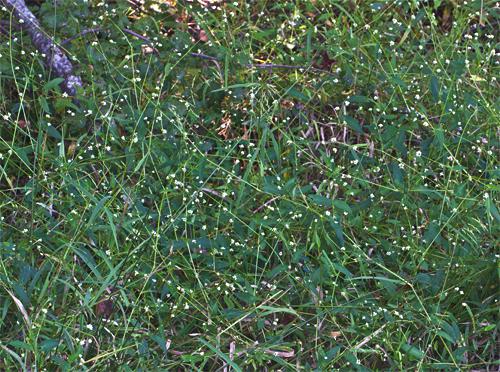
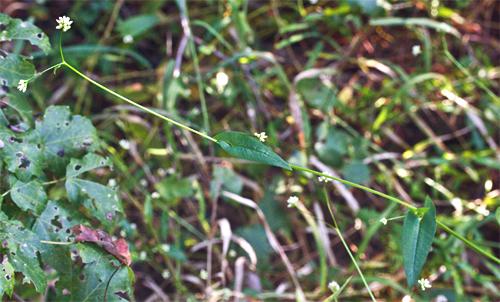
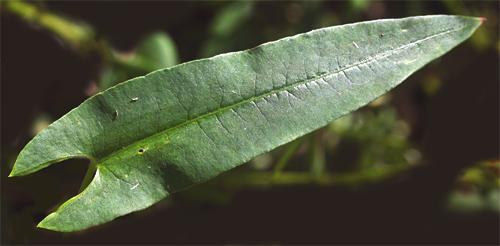
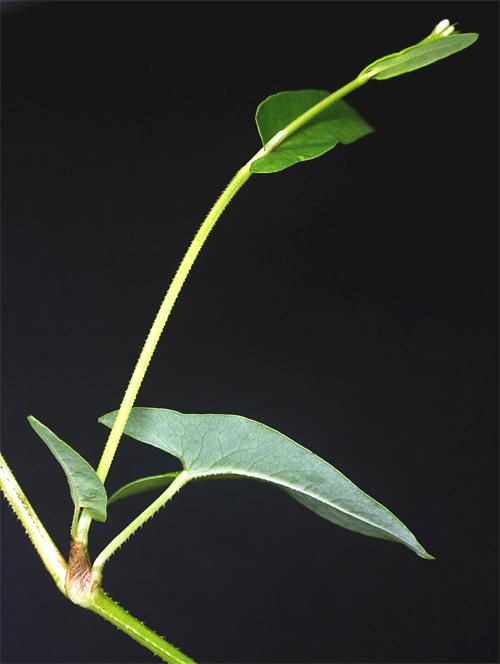
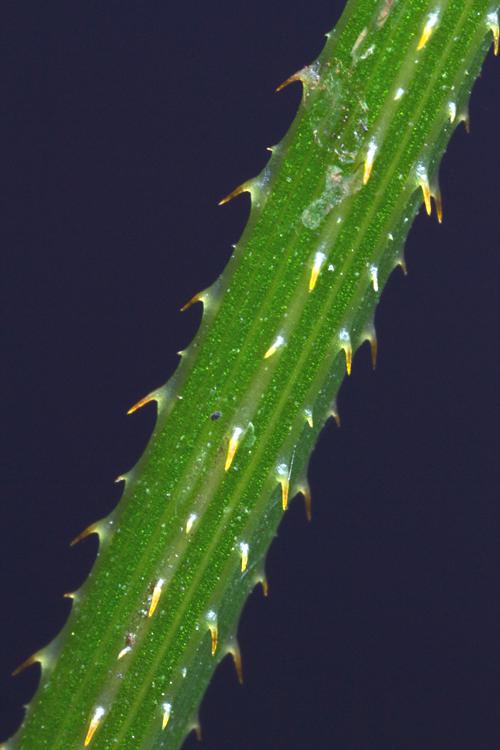


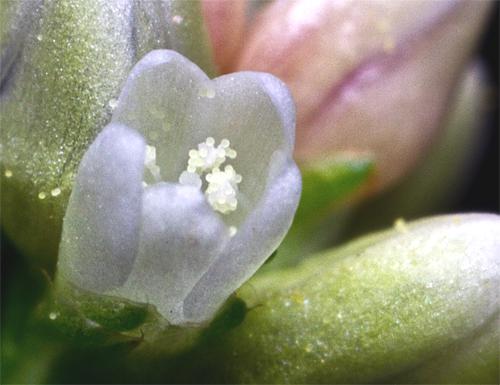
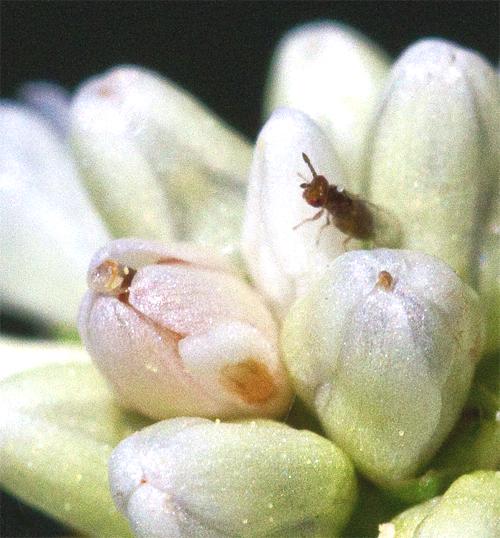



 Please report your sightings of
Please report your sightings of